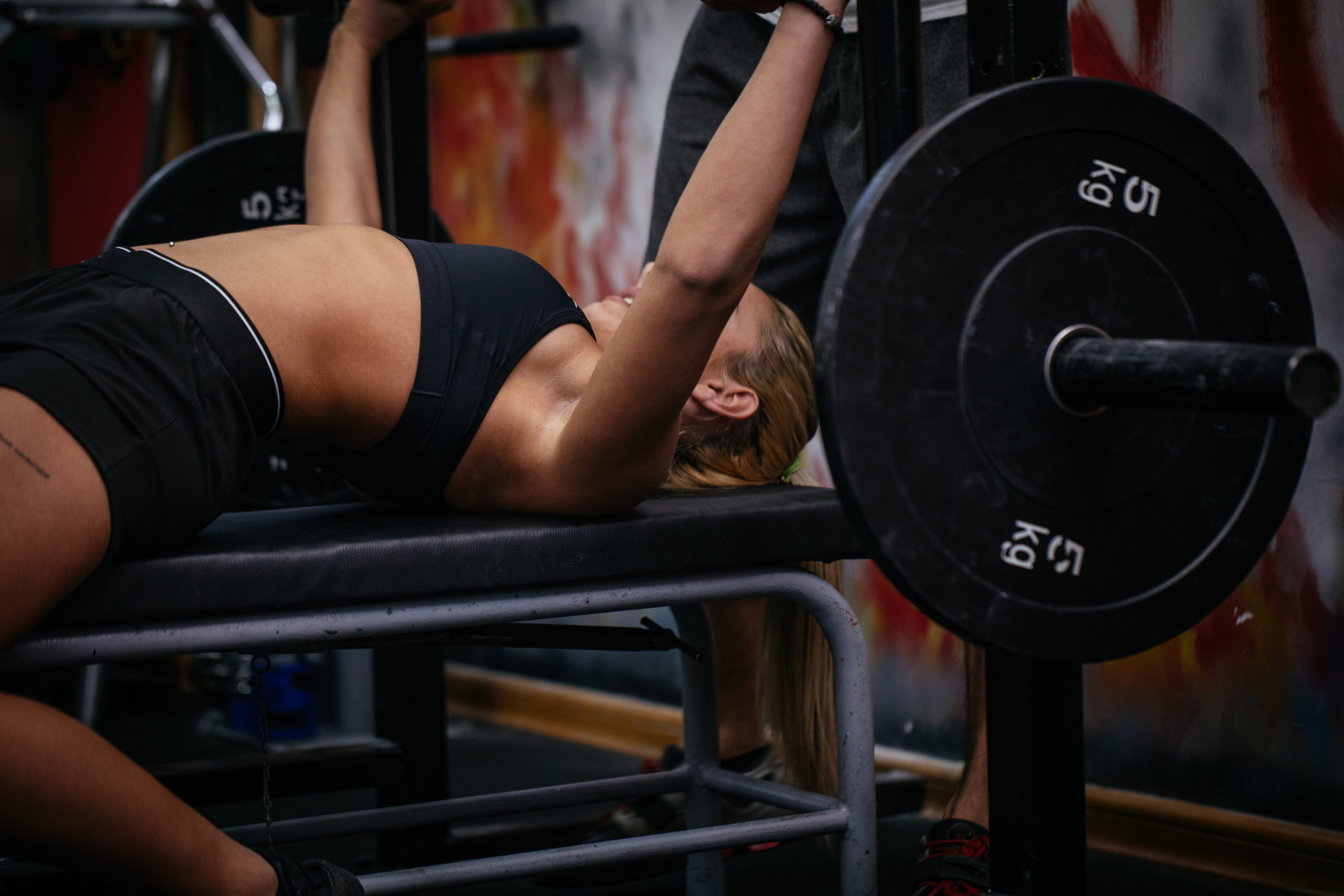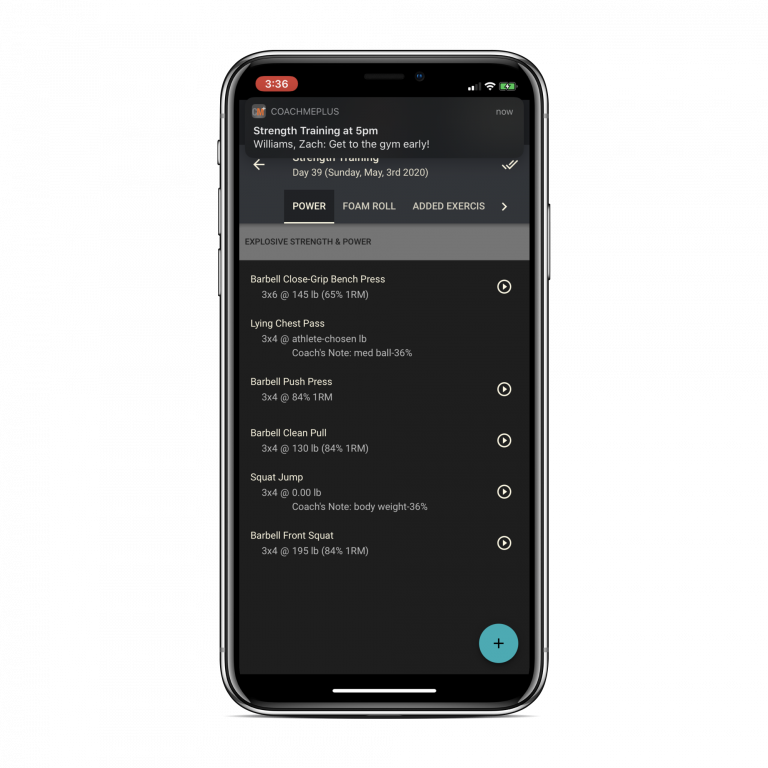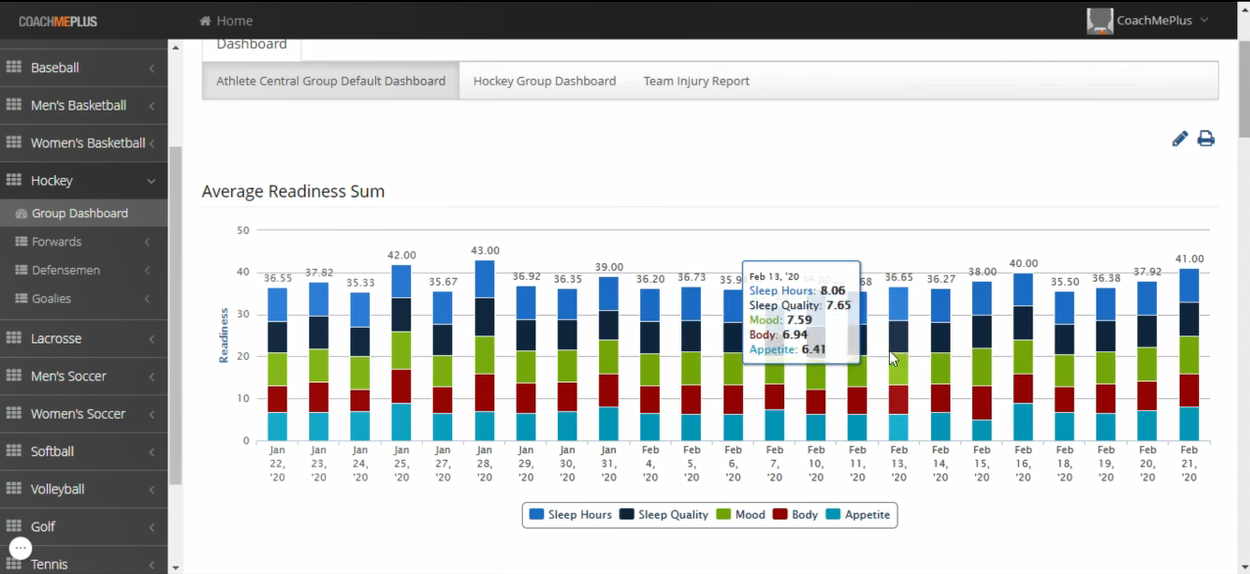There is increased attention being paid to the needs of youth athletes, mainly in the interest of reducing injuries and extending the careers of young participants. Resistance training, specifically in organized preparation that increases athletic performance, is growing in popularity. In this Academy Guide, we cover the benefits and challenges facing strength and conditioning coaches who have young athletes engaged in formal resistance training.
Even today, there are many myths and misconceptions about the safety and methodology of resistance training, and this article breaks down the science and practice in full detail. Athletes are starting weight training earlier and coaches are faced with choices on how to best prepare athletes. This article reviews important guidelines for safety and long-term athletic development.
Myths and Misconceptions
For decades, the belief that resistance training stunted an athlete’s growth caused many parents to discourage athletes from participating in strength training programs. Several theories, all invalid, have spread throughout parent circles. Two common but false beliefs are that heavy strength training causes a hormonal change that signals the body to stop growing and that the stress of lifting closes the epiphyseal plates of the long bones. These theories are not supported by science and were dismissed long ago. Unfortunately, the myths and misconceptions of youth resistance training still exist today.
While not exclusive to youth athletes, the old theory of an athlete becoming “muscle bound” still thrives. The belief that adding muscle decreases range of motion (flexibility) or coordination is spread as a false warning even now. Additional unrealistic fears are that adding strength training will turn an athlete into a bodybuilder overnight or disrupt or damage a female athlete’s endocrine system. In order to change the practice of youth resistance training, a lot of education must be promoted at both ends, meaning the athletes themselves and their parents. Encouraging parents and athletes to attend educational workshops is one step, but the use of other media channels is necessary to bring about the change needed to permanently eradicate fictional accounts of resistance training with younger participants.
Benefits of Resistance Training for Younger Athletes
Resistance training can be defined as purposeful stress on the neuromuscular system, including connective tissues and bone. One does not need to necessarily “lift weights” to achieve adaptations that are favorable for strength and size, but barbells and dumbbells are effective. Athletes should think about strength training as a wide spectrum of options, rather than connecting strength as a measure from free weights or machines. General stresses to the body from carefully designed resistance training can help youth athletes with the following:
Health Benefits
Skeletal Health: Youth athletes who chronically use resistance training improve their bone content profile and stimulate growth. While resistance training doesn’t increase the potential height of an athlete, there is no evidence that starting a safe and effective program stunts or impedes growth.
Mental Well-Being: It is reported that young athletes who actively participate in a resistance program have better moods and scores of emotional status. Athletes who resistance train constantly often have higher reported confidence levels.
Body Composition: Young athletes who are involved with a resistance training program have the potential to improve their body composition. Adding muscle and decreasing unnecessary body fat is important for health, injury resilience, and performance at all levels.
Cardiovascular System Support: Resistance training is not just for bones and muscles, it’s also a great way to improve low-level cardiac adaptations for wellness. Resistance training will not maximize aerobic capacity, but athletes who are stronger do have the ability to tolerate more workload.

Performance Benefits
Relative and Absolute Strength: Direct improvements to the neuromuscular system can happen in a matter of weeks and those strength changes can help with an array of performance outcomes. Youth athletes should focus on patient forms of progressive overload to support practice and competition demands on their body.
Power Development: Athletes who improve their strength levels can see improvements in power, or the ability to express strength rapidly. Youth athletes can improve their power from other forms of training, but indirect changes from conventional resistance training are very effective for young developing bodies.
Speed and Change of Direction: The research confirms that athletes who participate in resistance training can run faster and change direction better than those who do not. An athlete can improve their on-field performance, including the ability to decelerate, when they invest in a training program that addresses all forms of strength. Tracking testing data over periods of training allows for optimal performance.

Injury Reduction and Rehabilitation
Decrease in Injury: Currently, it is believed that a formal strength and conditioning program can help reduce the chances of non-contact injuries and even concussions. Athletes who add a resistance training program to their repertoire are more likely to remain healthy during their career in sport. Reduction in Severity of Injury: An athlete may experience injury during their career, but it’s believed that resistance training may reduce the severity of the injury. Not enough observational evidence exists to confirm this, but research in this area continues to grow. Improvement of Return to Play Outcomes: Athletes who have experience and the ability to train with resistance training improve their chances for a successful return to play. Postsurgical athletes can also improve their chances of success with a history of training. Previous levels of high strength can return faster is the athlete has a background in resistance training. In the future, more benefits will likely be discovered both by science and through experience. What we know now is that it’s nearly negligent not to start a youth athlete on a carefully designed resistance program that complements their needs and fulfills social enjoyment. A performance program should be carefully managed so that it addresses resistance without becoming a “measured performance program” used by grown athletes or elite levels of sport. Young athletes should not eliminate general forms of physical education and play, but add resistance training as part of their sports preparation. “It’s nearly negligent not to start a youth athlete on a carefully designed resistance program.”CLICK TO TWEETMethods and Training Modalities
Resistance training is a broad term, so many options are available to help youth athletes become generally stronger and more coordinated. Youth athletes can use gymnastic exercises, conventional strength training movements, and nearly any modality that elite athletes use. Most of the modifications are adjusting intensity and focusing on teaching. While experts promote internal body weight as a starting point, at times an athlete may not have a sufficient strength-to-weight ratio that allows them to excel with relative strength exercises. Coaches can modify exercises or use external loads to improve training session success, provided they have experience teaching and training those movements. Athletes should be exposed to a wide range of modalities so they become more fluent in their training, and coaches should seek out expertise and education to support young athletes. What is not recommended are advanced exercises or exercises that increase the risk of injury in favor of methods that extend careers. The risk-to-return ratio should be very conservative, so athletes are not exposed to unnecessary risk. Conversely, a program that is too conservative will not provide sufficient overload or demand, so the training could expose an athlete to greater risk from poor preparation. Regardless of the program used, youth athletes should be exposed to a wide range of movement patterns and modalities so they are well-rounded and more trainable in the future. Coaches who are patient and concerned about LTAD will raise their athlete’s ceiling of performance, creating a better environment for growth and success. Using the Program Builder create season-long training programs for youth athletes.
Long-Term Athletic Development vs. Health Promotion
An athlete’s career will likely end at the start of adulthood. Most athletes in youth levels will not compete at the elite level, including university or college. Therefore, a focus on the general fitness benefits of resistance training is needed to ensure that the post-career years are active and healthy. It may appear that resistance training for health promotion is in philosophical conflict with sports performance, but the reality is most of the principles of strength training overlap both success in competition and fitness goals. Efforts to educate athletes on general qualities of resistance training, such as bone health and mental wellness, are essential to athletes and the general population. Elite athletes benefit from less-demanding training as well, as general exercise manages body competition and reduces burnout from staleness.
Ironically, the efforts to be more sport-specific with athletes early tragically backfired with overuse injuries and a poor capacity for handling training workloads. Athletes who specialize too soon or too much often fail to reach their potential with long-term success in sport and are more likely to quit early. It can be argued that fitness training that is general and more health-related is a better investment in the long run, but a case for having it compliant to specific demands of sports training and competition is reasonable. A program that encourages an athlete to improve their ability to be a better athlete and doesn’t increase risk of injury is considered best practice. Injury reduction exercises are researched every year as interventions for youth and elite athletes, but a focus on overall resiliency is recommended.
Tracking and Monitoring Youth Resistance Training
Youth athletes must follow the principles of training with far more attention than their elite counterparts. The general consensus with youth resistance training is it should be focused on a conservative approach that teaches fundamentals while adhering to progressive overload and modern periodization principles. The most effective way to track and monitor athletes is by using a record-keeping system—ideally digital—with every session to manage workload and measure progress. A combination of load and technique tracking is sufficient to monitor a youth training program, but additional methods are recommended as well.
One of the unique challenges with youth training is integrating biological age factors with the monitoring of athletes. Peak height velocity (PHV), the period where athletes experience their fastest growth, is an important factor to consider when performing analysis with internal calculations. Coaches often use relative and absolute strength scores for comparison purposes, and it’s important to adjust for chronological age as well as PHV. Athletes who are weighed and tracked for their height during their adolescent years will have a greater chance of staying healthy and avoiding stagnation in their development. In addition to physical attributes, academic and social factors should be reviewed annually in order to encourage passion for enjoying sport and recreation, not just performance. Keeping daily records of youth athletes and comparing month over month is a simple step in the development of an athlete.

The Need to Balance Athleticism and General Strength
Starting a formal resistance training program early is a real advantage for an athlete’s future, for both sports and their health. Exposure to the general principles of strength training as soon as it is appropriate is an investment in an athlete’s future. Coaches will have to juggle and balance the need to teach with the need to train, as compromising on either one is just not wise with the demands of a modern athlete. “Starting a formal resistance training program early is a real advantage for an athlete’s future, for both sports and their health.”CLICK TO TWEET Youth athletes and even non-athletes should see strength training as a lifelong commitment, from childhood to adulthood. Any coach who can introduce strength training methods without interfering with the necessary demands of physical education, LTAD requirements, and sport-specific needs is extremely valuable today. In the future, more research and education will be necessary to fully leverage the benefits of youth weight training so that all areas of their development can be promoted, not just the specifics of resistance training.

CoachMePlus is a comprehensive solution for any training environment, ranging from scholastic level to pros, and including both military and private facilities.

Recent Comments